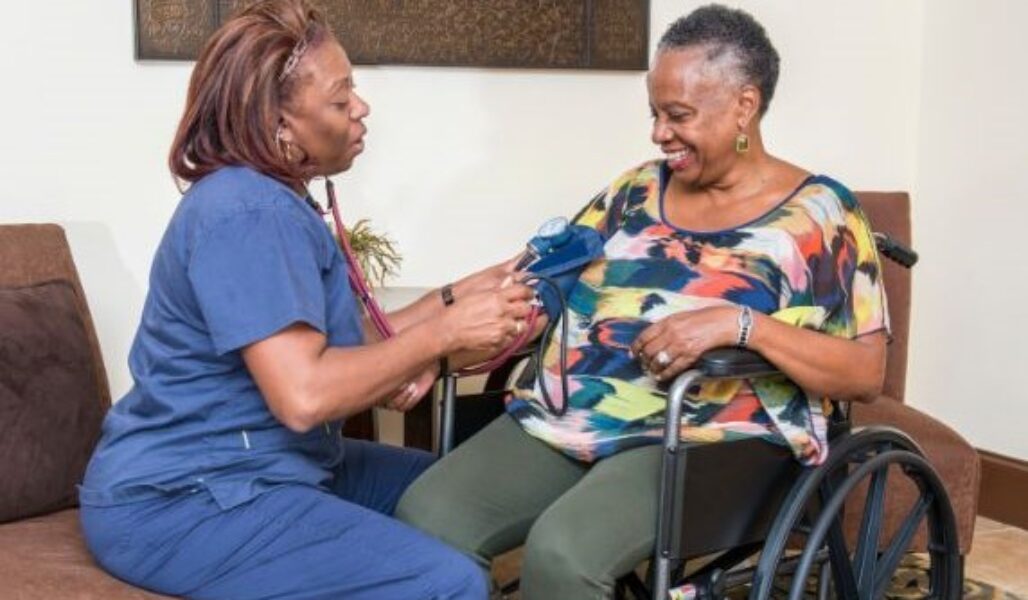Unwinding of the Public Health Emergency (PHE)
Medicare Claims and Documentation of Telehealth Services for Home Health Agencies

My name is Kathy Wibberly and I am Director of the Mid-Atlantic Telehealth Resource Center. Today, we aim to provide an overview of the developments in Medicare telehealth for Home Health Agencies over the past year (HHAs).
BACKGROUND. In response to the COVID-19 public health emergency (PHE), the Centers for Medicare & Medicaid Services (CMS) revised their regulations in April 2020, to allow HHAs the retrospective authorization, effective from March 1, 2020, to leverage telehealth services. In November 2020, CMS made this allowance permanent and issued new requirements related to telehealth-enabled home health services.
For HHAs, all services provided within a 30-day period of care fall under a bundled prospective payment. Although CMS allows services to be furnished via a telecommunications system so long as the services are included in a beneficiary’s care plan, these services don’t qualify as a “visit” for purposes of patient eligibility or payment per Medicare law, nor can they be substituted for a home visit as ordered on the care plan. The HHA is required to document in the medical record the ways in which telecommunications technology helps to achieve the goals outlined on the care plan. Furthermore, the care plan must describe how such technology is tied to the patient-specific needs as identified in the comprehensive assessment.
In a March 2022 Report to Congress, the Medicare Payment Advisory Commission recommended tracking the use of telehealth on home health claims to improve payment accuracy. Prior to January 1, 2023, data on telecommunications technology used during a 30-day period of care at the patient level had not been collected on home health claims.
The Office of Inspector General (OIG) conducted an audit during the period from March 1 to December 31, 2020, and found that, although a limited number of HHAs provided services via telehealth early in the PHE, those who did were not in compliance with these Medicare requirements.
Read the OIG Audit Report
THE NEW G-CODES. In response to the above findings and recommendations, CMS developed three new G-codes for use by HHAs. Effective January 1, 2023, HHAs could begin voluntarily reporting the new telecommunications G-codes on home health claims. Effective July 1, 2023, such reporting became mandatory. The three G-codes are as follows:
- G0320: Home health services furnished using synchronous telemedicine rendered via a real-time two-way audio and video telecommunications system.
- Report each service as a separate dated line under the appropriate revenue code for each discipline providing the service
- Report units as one per service (not as time increments)
- G0321: Home health services furnished using synchronous telemedicine rendered via telephone or other real-time interactive audio-only telecommunications system
- Report each service as a separate dated line under the appropriate revenue code for each discipline providing the service
- Report units as one per service (not as time increments)
- G0322: The collection of physiologic data digitally stored and/or transmitted by the patient to the home health agency (for example, remote patient monitoring)
- Report remote patient monitoring that spans a number of days as a single line item showing the start date of monitoring and the total number of days of monitoring in the units field for the billing period
Download the MLN Matters Fact Sheet: Telehealth Home Health Services: The New G-Codes
ADDITIONAL CLARIFICATION ON TELEHEALTH REPORTING FOR HOME HEALTH CLAIMS. After implementation of the new G-Codes and their associated reporting requirements, CMS identified some issues with the submitted claims. CMS issued a Change Request in October 2023 to revise the Medicare Claims Processing Manual to be clearer related to these two points:.
- HHAs should not submit a telehealth service date as the location code claim line-item date. Only an in person visit date should be reported with the location code.
- HHAs should not submit a claim if only telehealth services and no in-person visits were provided in the billing period. (CMS acknowledges that this clarification may result in the loss of some data regarding the use of telecommunications technologies.)
CMS hopes that by collecting data using G-codes, they will be better able to understand the characteristics of the patients using services remotely and have a better understanding of the social determinants that affect who benefits most from these services and what barriers may exist for certain subsets of the population.
Download the MLN Matters Fact Sheet: Home Health Claims: Telehealth Reporting
Download Medicare Claims Processing Manual: Chapter 10 – Home Health Agency Billing
